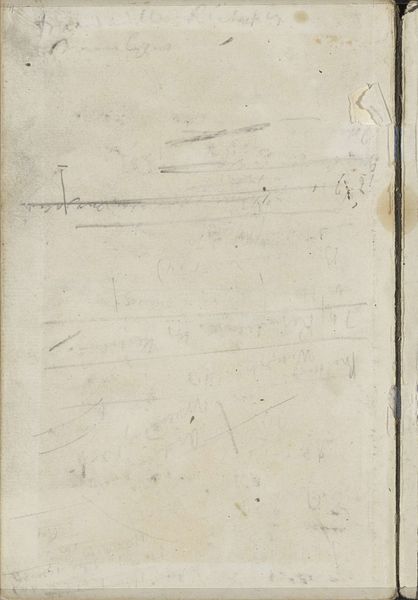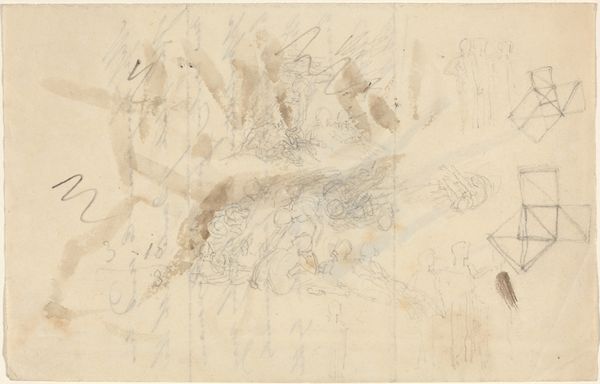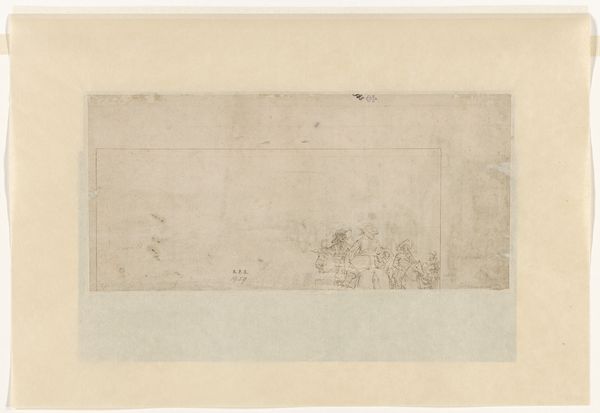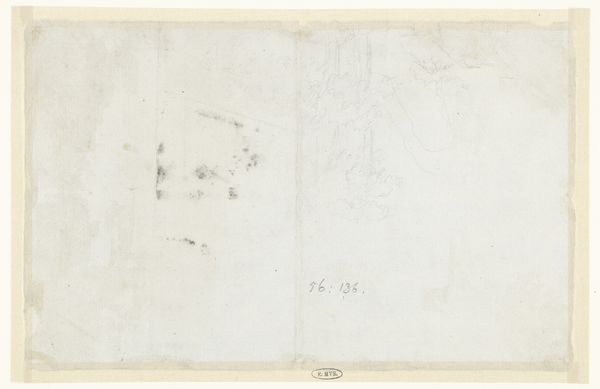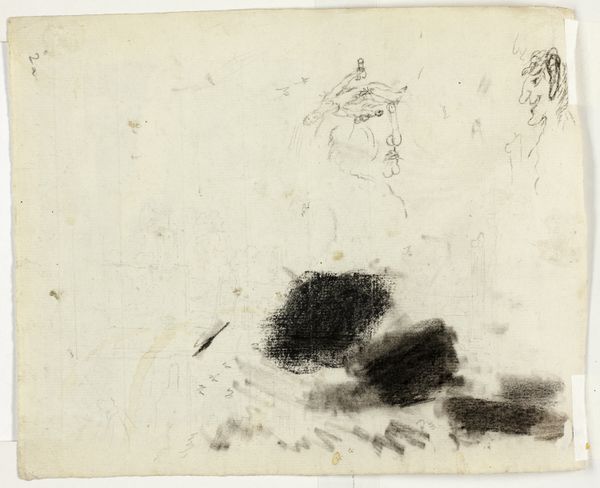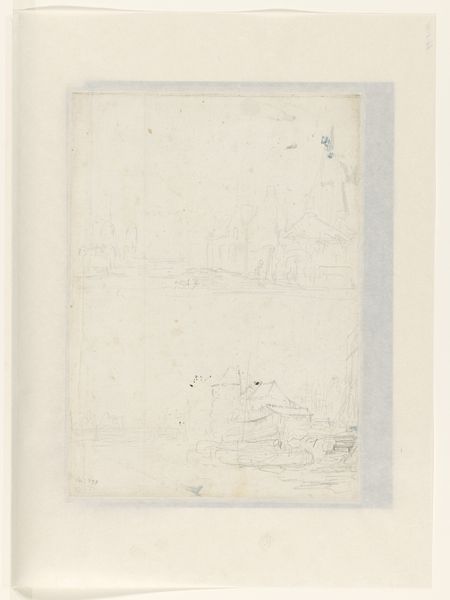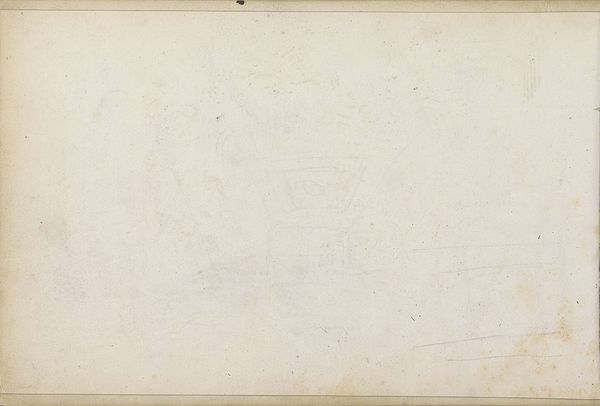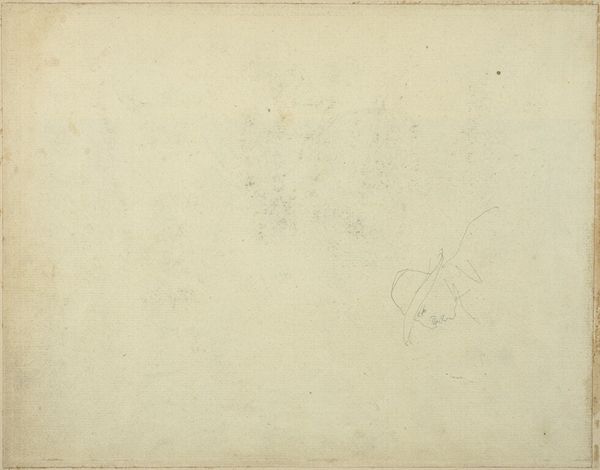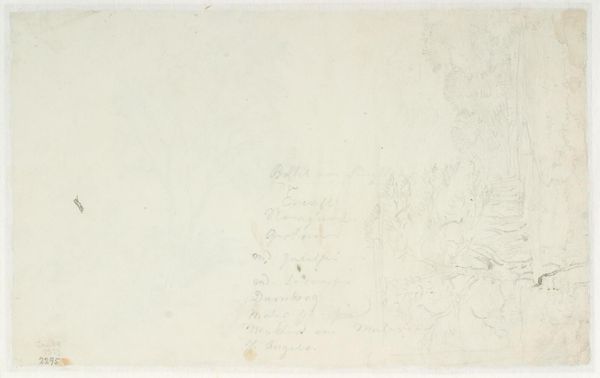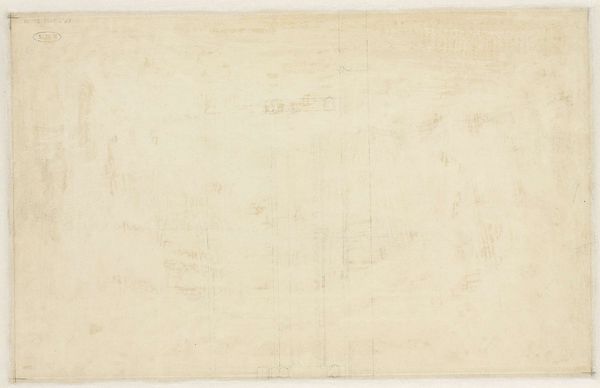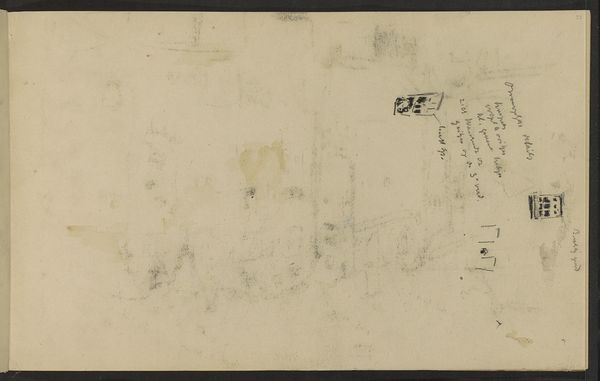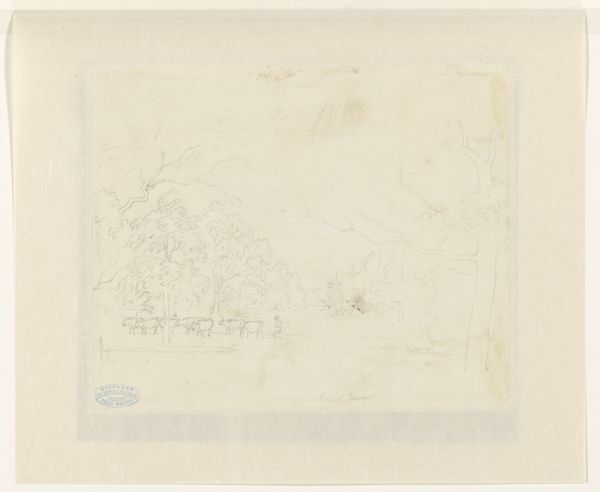
Study for Le Pont-au-Change (Pont-au-Change, Paris) 1854
0:00
0:00
Dimensions: 135 × 252 mm
Copyright: Public Domain
Curator: There's a ghostly quality to this study of the Pont-au-Change, almost like a memory trying to surface. It's pale and sketchy; a bridge emerges faintly against a backdrop of ominous, almost violent strokes in the sky. Editor: It gives off a very unfinished feel, as though the artist abandoned it mid-way. And considering it's from 1854, smack-dab in the era of Romanticism, I wonder how the cityscape here challenges or reinforces notions about the modern world back then. Curator: It's Charles Meryon’s "Study for Le Pont-au-Change (Pont-au-Change, Paris)." He's working here with graphite on paper, really capturing the bridge with minimal lines. Knowing his style, he’s probably seeking a raw, immediate sensation, and it certainly leaves room for the viewer’s own imagination. Editor: And what was the general public feeling back then, with these newly industrialized urban spaces taking hold? Meryon’s bridge seems delicate, as if threatened. Are the sky's menacing marks reflecting broader anxieties about the rapidly transforming social fabric and the impact of modernization? Curator: Perhaps! The original Pont-au-Change itself was packed with goldsmiths and shops; this wasn’t simply a passage but a hub of intense commerce and craft. Meryon, though, almost completely obscures any detail that alludes to commerce. The bridge, although usually full of shops at the time, looks vacant and somber. Editor: Absolutely. That makes me think about labour conditions at the time, which for the most part were unregulated and grueling. Maybe the empty scene hints at something less romantic. Maybe it hints at erasure of labor's violence. Curator: Fascinating, I love that reading. Meryon suffered from mental health struggles, and some historians even connect this instability with the melancholic feel to much of his artwork. Perhaps it represents his subjective world mingling with objective reality in Paris at the time. Editor: Indeed. So even though it’s just a simple bridge, what really stands out is how Meryon offers this liminal space, a bridge between the city and something perhaps less material. I think those stark slashes up top hint at his anxieties and his interiority. Curator: Exactly, the artist invites us to meet halfway, to reflect. To maybe understand the historical importance as a starting point to thinking about art. Editor: I agree completely! It’s really interesting to see what the artists wanted to achieve, versus what a piece reflects when you consider historical context.
Comments
No comments
Be the first to comment and join the conversation on the ultimate creative platform.
